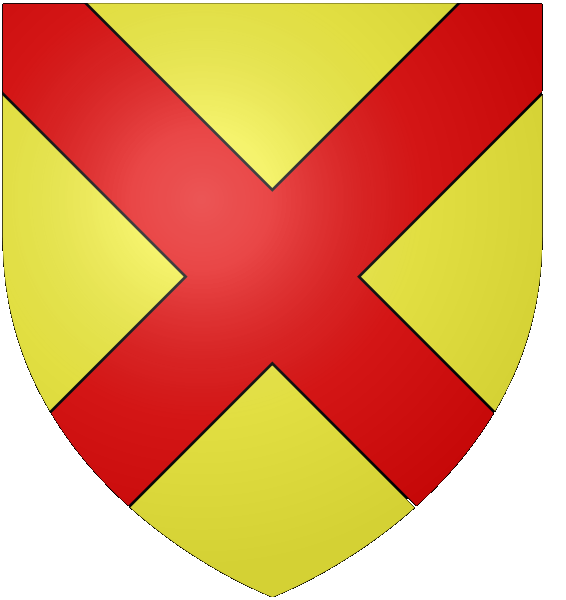

Le trésor des seigneurs de Hattstatt
Cette charmante cité viticole située au pied du Hatschbourg a été pendant plusieurs siècles le centre d’une seigneurie qui a compté dans l’histoire locale. L'histoire de Hattstatt se confond avec celle du Haut-Mundat des Princes-Evêques de Strasbourg. Pendant plusieurs siècles, Hattstatt était le centre d'une importante seigneurie. Le village était fortifié. Comme toute la région, il a souffert des ravages de la Guerre de Tente Ans. Il y subsiste les vestiges d'une porte, de remparts et de fossés. Aujourd’hui, Hattstatt possède un riche patrimoine bâti et confirme son cachet de village de la Route des Vins d’Alsace, notamment par l'effort fait en matière de restauration des maisons pittoresques. Le village dispose du label Villes et Villages fleuris pour son fleurissement soigné. L’église Sainte-Colombe, subtil mariage de l’art roman et gothique, recèle deux magnifiques fresques et de nombreux objets mobiliers classés parmi les Monuments Historiques.
Der Schatz der Landesfürste von Hattstatt
Hattstatt war das Zentrum eines wichtigen herrschaftlichen Gebietes über mehrere Jahrhunderte. Das Dorf wurde während dem Dreißigjährigen Krieg sehr verwüstet. Heute ist Hattstatt ein typisches Dorf der elsässischen Weinstrasse mit einem reichen Erbe.
Parking: N 48° 00.650 E 007° 18.015
Q1 / Das Wappen von Hattstatt: N 48° 00.654 E 007° 18.015
Das Rathaus wurde 1554 im späten gotischen Stil mit einer doppelten Treppe gebaut. Es ist mit den Wappen der Adelsfamilien von Hattstatt dekoriert. Was kann man auf diesem Wappen sehen?
- das Schwert von sankt Paulus, A=10
- das Kreuz von sankt Andreas, A=20
- der Schild von sankt Thomas, A=30
Q2 / Brunnen: N 48° 00.679 E 007° 18.053
Auf dem Brunnen von 1742 befindet sich eine Statue von Sankt Kolumba. In welcher Form ist der Brunnen gebaut?
– Hexagon, B=10
– Heptagon, B=20
– Oktogon, B=30
Q3 / Sankt-Kolumba Kirche: N 48° 00.728 E 007° 18.097
Die ältesten Teile der Kirche stammen aus dem 11. Jahrhundert. Der obere Teil wurde 1772 im Barockstil gebaut und die Turmspitze 1882. Wie viele Uhren sieht man auf dem Turm? =C
Q4 / Wappen von Marbach: N 48° 00.694 E 007° 18.047
Schauen Sie mal nach oben! Hier auf dem Vorbau sieht man ein Wappenschild von 1712, das während der Revolution nicht gehämmert wurde, weil es versteckt war. Welches Tier ist gemeisselt?
– ein Einhorn, D=10
– ein Steinbock, D=20
– ein Kamel, D=30
Q5 / Haus aus der Renaissancezeit: N 48° 00.703 E 007° 17.999
Auf diesem Haus sieht man ein Erker mit einem gehämmerten Wappenschild. Welches Datum kann man darauf lesen? =E
Q6 / Ehemaliges Handwerk: N 48° 00.698 E 007° 17.921
Welche Fabrik befand sich damals in dem Haus?
– tuilerie (Ziegelei), F=10
– briqueterie (Backsteinfabrik), F=20
– marbrerie (Steinmetzbetrieb), F=30
Q7 / Basilisk: N 48° 00.608 E 007° 17.970
Auf dem Brunnen steht ein mythisches Tier: ein Basilisk, oft als Mischwesen mit dem Oberkörper eines Hahns, auf dem Kopf eine Krone, und dem Unterleib einer Schlange dargestellt. Das Vorbild von diesem Brunnen wurde 1884 vorgestellt, als in einer Stadt, ein Wettbewerb organisiert wurde, um neuen Brunnen zu bauen. In welcher Stadt fand den Wettbewerb statt?
– London, G=10
– Basel, G=20
– Madrid, G=30
Der Schatz: Hattstatt ist heute ein typisches Dorf der Elsässischen Weinstrasse, mitten im Weinberg, und mit Zahlreichen Blumengeschmückten Häusern und Blumenbeeten.
N 48°00.Nord /E 007°18.Est
Nord =E-(AxB)-G-355
Est = 405-(CxDxF)
The lords of Hattstatt
Hattstatt was the centre of an important seigneury during many centuries. The village was much ravaged during the Thirty Years' War. Nowadays, Hattstatt is a typical village on the Alsatian Wine Route with a rich heritage.
Parking: N 48° 00.650 E 007° 18.015
Q1 / Coat of arms: N 48° 00.654 E 007° 18.015
This building is the town hall and was built in 1554. The coat of arms of the village are engraved on the porch. What do you see ?
– Saint Paul’s sword, A=10
– Saint Andrew’s cross, A=20
– Saint Thomas’s shield, A=30
Q2 / Fountain: N 48° 00.679 E 007° 18.053
The statue over the fountain is Saint Columba. What’s the shape of the fountain ?
– hexagonal, B=10
– heptagonal, B=20
– octagonal, B=30
Q3: Church: N 48° 00.728 E 007° 18.097
The church is situated in the upper part of the village, near the ruin from an early castle. The oldest parts were built in the 11th century. The upper part was built in baroque style in 1772 and the spire in 1882. The roman apse was replaced by a gothic choir and buttresses in the 14th century. How many dials do you count on the bell tower ? =C
Q4: Marbach’s coat of arms: N 48° 00.694 E 007° 18.047
Look up on the porch ! This shield was built in 1712. Which animal do you see ?
– a unicorn, D=10
– an ibex, D=20
– a camel, D=30
Q5 / Renaissance house: N 48° 00.703 E 007° 17.999
On this house, you can see an orile window with a hammered shield. What date can you read ? =E
Q6 / Craft: N 48° 00.698 E 007° 17.921
Which manufacture took place in this house ?
– a tileworks, F=10
– a brickworks, F=20
– a marbleworks, F=30
Q7 / Basilisk: N 48° 00.608 E 007° 17.970
The mythological creature over this fountain is a bisilisk with a dragon’s tail, bat’s wings and a cock’s head. The shape of this fountain was imagined in 1884 in order to create fountains in the streets of a town. In which town ?
– London, G=10
– Basel, G=20
– Madrid, G=30
The treasure: Bravo ! You've answered all the questions. Now you can find the treasure ! Hattstatt is a typical village on the Wine Route, with remarkable flowered borders.
N 48°00.Nord /E 007°18.Est
Nord =E-(AxB)-G-355
Est = 405-(CxDxF)